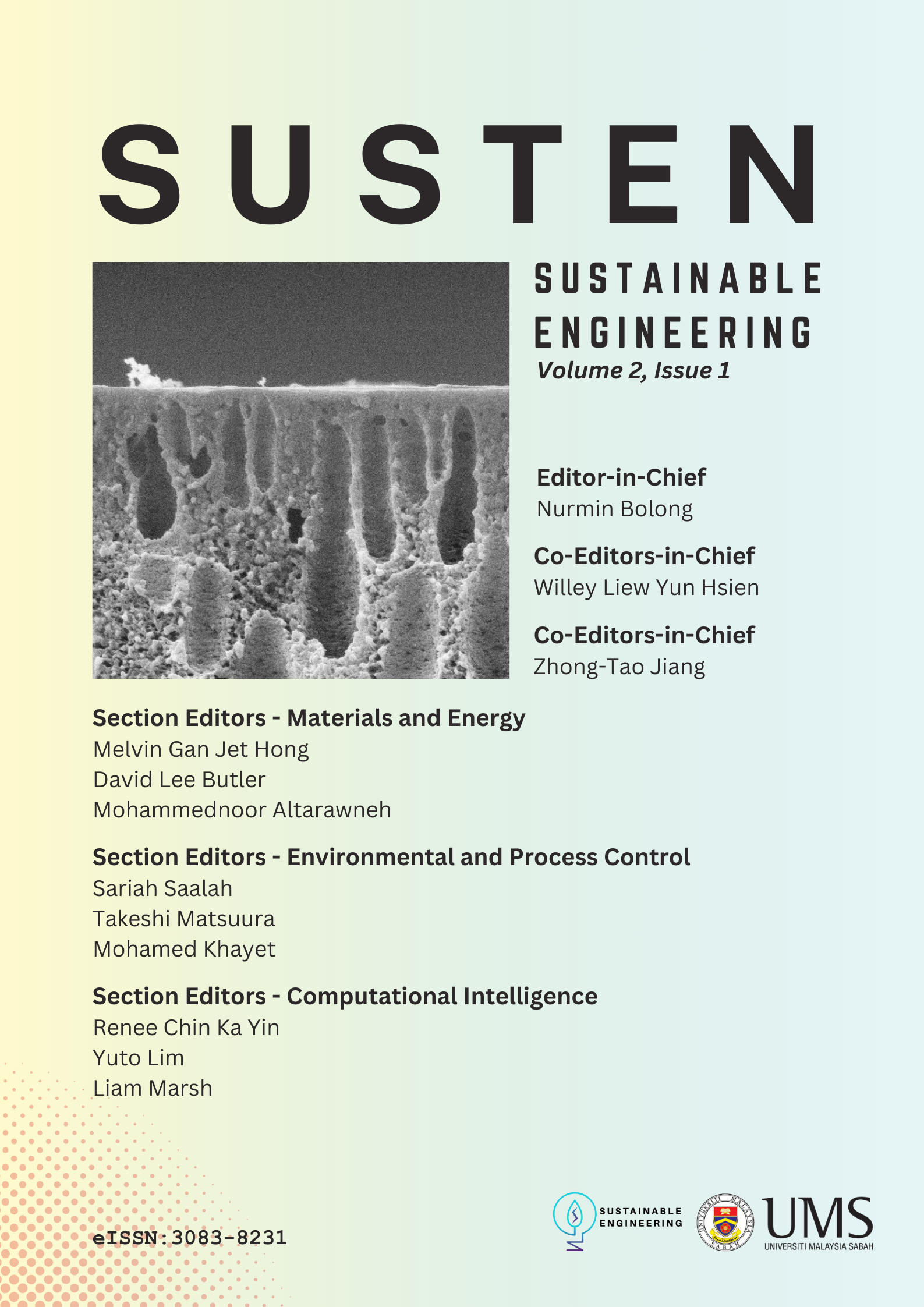Ultrahydrophobic Surface for Water Treatment by Membrane Processes-Prediction of Water Contact Angle on Air/Solid Composite Surface by Solving Young-Laplace Equation
DOI:
https://doi.org/10.51200/susten.v2i1.5052Keywords:
Contact angle, Cassie-Baxter equation, Young-Laplace equationAbstract
The evaluation of contact angle (CA) of air-solid composite surface is growing in its importance in membrane separation technology. The reason is that the super-hydrophobic property of the surface allows self-cleaning of membrane surface in various membrane separation processes and also mitigates pore wetting, which is considered the serious disadvantage of membrane distillation. The Cassie-Baxter equation is currently considered one of the best tools to evaluate CA of the air-solid composite surface. However, most of the experimental works of CA measurement were carried out by the sessile drop method, in which the size of the droplet is limited to micro- or submicrometer range, and it is not known how CA is affected by the air content of the air-solid composite surface especially when the droplet size is in a range of millimeter. In this work, the meniscus shape of a large water droplet with a size greater than the capillary length (2.713 mm) was calculated for different air contents at the air-solid surface by solving the Young-Laplace differential equation. It was concluded that the effect of fs (fraction of solid surface) on CA does not depend significantly on the droplet size, even though the droplet flattens considerably as the droplet size increases.






